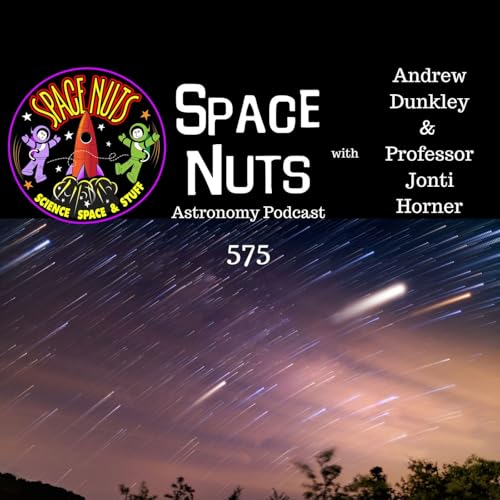Sponsor Details:
This episode of Space Nuts is brought to you with the support of NordVPN. To get our special Space Nuts listener discounts and four months free bonus, all with a 30 day money back guarantee, simply visit wwwnordvpn.com/spacenuts or use the coupon code SPACENUTS at checkout.
Leonid Meteor Shower, Mars Escapade Mission, and Gyrochronology
In this captivating episode of Space Nuts, hosts Andrew Dunkley and Professor Jonti Horner delve into the latest astronomical events and missions. From the ongoing Leonid meteor shower to the successful launch of the Mars Escapade mission, this episode is filled with stellar insights and cosmic discoveries that will ignite your curiosity about the universe.
Episode Highlights:
- The Leonid Meteor Shower: Andrew and Jonti discuss the current Leonid meteor shower, exploring its unique characteristics and historical significance. They explain the science behind meteor showers and the factors that influence their visibility, providing listeners with tips on when and where to catch the best views.
- Successful Mars Escapade Mission: The hosts share exciting news about the Mars Escapade mission, which has successfully launched aboard Blue Origin's New Glenn rocket. They discuss the mission's innovative trajectory, which involves a gravity assist from Earth, and the scientific objectives aimed at unraveling the mysteries of Mars' atmosphere and its evolution over time.
- Chasing Stars with Gyrochronology: In a fascinating segment, Andrew and Jonti introduce the concept of gyrochronology, a method used to estimate the ages of stars based on their rotation rates. They explore how this technique can help identify stars that were once part of the Pleiades cluster, shedding light on the complex history of star formation in our galaxy.
- Chinese Astronauts Stranded on Tiangong Space Station: The episode also covers the current situation involving Chinese astronauts stranded on the Tiangong Space Station due to a damaged spacecraft. Andrew and Jonti discuss the implications of this incident and the challenges faced by space missions in an increasingly crowded orbital environment.
For more Space Nuts, including our continuously updating newsfeed and to listen to all our episodes, visit our website. Follow us on social media at SpaceNutsPod on Facebook, X, YouTube Music Music, Tumblr, Instagram, and TikTok. We love engaging with our community, so be sure to drop us a message or comment on your favorite platform.
If you’d like to help support Space Nuts and join our growing family of insiders for commercial-free episodes and more, visit spacenutspodcast.com/about.
Stay curious, keep looking up, and join us next time for more stellar insights and cosmic wonders. Until then, clear skies and happy stargazing.
Become a supporter of this podcast: https://www.spreaker.com/podcast/space-nuts-astronomy-insights-cosmic-discoveries--2631155/support.
Más
Menos
 37 m
37 m 41 m
41 m 29 m
29 m 37 m
37 m 48 m
48 m 55 m
55 m 43 m
43 m 52 m
52 m
